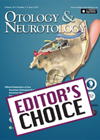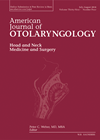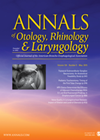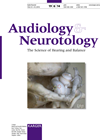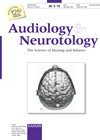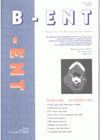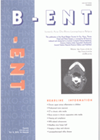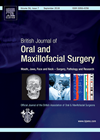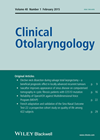
Journal Reviews archive for September 2015
When should that child’s wet ear be operated on?
The team from Birmingham have provided a meta-analysis to answer the question of when to perform a type 1 tympanoplasty on chronic paediatric perforations (under 18 year olds). Forty-five studies were included which resulted in 2609 cases. Closure rate at...
Early ENT involvement can improve long-term quality of life after temporal bone fractures
Sports injuries and road traffic accidents are common causes of head injuries, with 18-40% of skull base fractures involving the temporal bone. Often these patients have other more life threatening injuries so ENT intervention is delayed or absent. Facial palsy,...
Curettage adenoidectomy impairs eustachian tube function
Adenoidectomy is a common procedure undertaken for obstructive sleep apnoea and nasal obstruction. Curettage is the most common technique but is associated with complications (mucosal trauma, bleeding) that may cause eustachian tube dysfunction (ETD). This study analysed changes in middle...
Benefit of prolonged voice rest following phonosurgery
The recommendation for voice rest following surgery is not agreed amongst surgeons, regarding either the type of voice rest (absolute or relative) or the optimal duration. In this ongoing study, 31 elective patients operated on for benign laryngeal lesions were...
Update on orbital complication of acute sinusitus
This study aims to illustrate the Graz experience. The study is retrospective, 53 patients with orbital complication of sinusitis were examined / confirmed by a University Hospital from 2000 to 2011. Thirty-seven underwent surgery, seven of which experienced a recurrence....
Short-term risk of falling after cochlear implantation
This paper examined the effect of cochlear implantation on balance function in 16 adult patients. The authors assessed balance pre- and (two weeks) post-operatively by timing how long each patient was able to stand on a foam pad with their...
Vestibular functions of hereditary hearing loss patients with GJB2 mutations
Mutations of the GJB2 gene are a common cause of deafness, being found in 15-25% of cases of congenital deafness. Over 100 mutations are now recognised and may be associated with a hearing loss ranging from mild to profound. This...
Hyperbaric oxygen for sudden onset sensorineural hearing loss
Idiopathic sudden onset sensorineural hearing loss (SSNHL) is a relatively common presentation to the ENT emergency department, and can have profound effects on patients’ lives. This retrospective study looked at 15 patients who were treated with hyperbaric oxygen after failure...
Serum urea and epistaxis
This was a small retrospective review from Swansea looking at 278 patients who attended a teaching hospital Accident and Emergency department with a diagnosis of epistaxis. Only 119 of these patients had their serum urea measured. The investigators found that...
A new free flap for the head and neck?
Reconstruction of major defects in the head and neck is usually an area where maxillofacial or plastic surgery colleagues come to assist, with consideration of the size and function any repair has to fulfil. Whilst the radial forearm free flap...
Plunging new depths for the treatment of ranulas
Within our scope of practice, we encounter a number of salivary gland pathologies, including the sublingual gland. Clinical signs are often subtle, and even with meticulous surgical management, morbidity can easily occur. Textbooks advocate excision of the gland as the...
Post-operative debridement following FESS
Postoperative treatment pathways for patients following functional endoscopic sinus surgery (FESS) vary widely with the topic of debridement of the nasal cavity a subject of conjecture. This article is the result of two independent reviewers using the consort guidance for...

